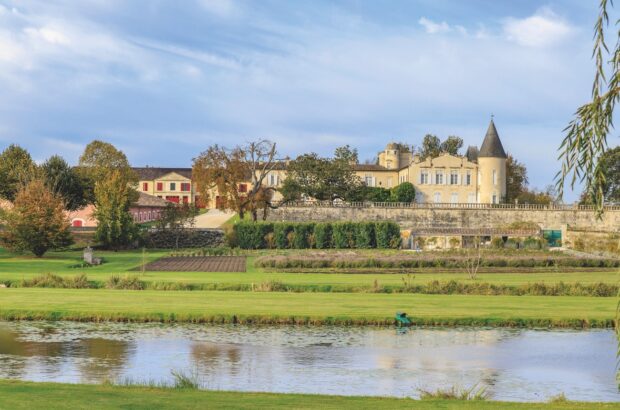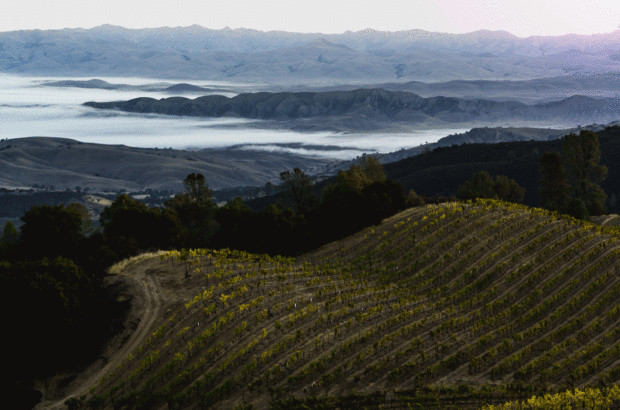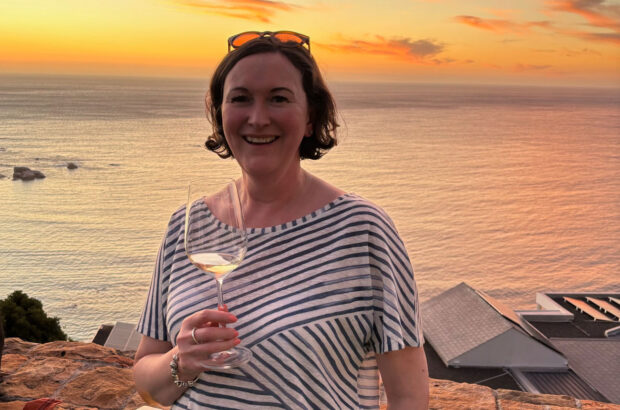October saw the launch of the eighth and latest edition of The World Atlas of Wine by Hugh Johnson and Jancis Robinson MW. First published in 1971, the original tome was hailed as an instant classic and essential reference work for wine lovers. Since then, the past seven editions have sold nearly five million copies between them and been translated into 14 languages.
Click here to buy The World Atlas of Wine
Decanter caught up with the authors to talk about the latest Atlas and to find out how it has charted the important changes that have taken place in the world of wine over the past five decades.
John Stimpfig The launch of a new edition of The World Atlas of Wine is always a major publishing event, but why should wine lovers buy this edition if they have the sixth or seventh?
Hugh Johnson Well, because so much has changed – as it always does between editions. At 416 pages this is the longest ever, and all the information and content has been completely updated, or it is brand new.
Jancis Robinson MW Yes, this eighth edition has 230 maps, 22 of which are new. And all of the old ones have been completely revised and revved up. We also have a lot of new features, including 3D maps to show the influence of geography, specifically mountains, oceans and wind currents.
Which new regions or countries are featured in this edition?
JR There are too many to mention, but we have new maps of St Helena and Alto Piemonte. We’ve extended our South American coverage with the inclusion of Brazil and southern Uruguay. We also have a lot more coverage of Canada, and there’s more detail in China around Beijing and Huailai. Ningxia had already gone into the seventh edition.
HJ The wine world is ever-changing and expanding. So it’s always a difficult decision around what to leave out and what to put in. Unfortunately, this means that we’ve had to lose some maps. For instance, Frascati was dropped in the fifth edition. And we had to lose the Ruwer too, which I was sad about because the wines are excellent and it was such a pretty map, with lovely detailed contours.
How long does the process take, and how do you divide up the work?
JR It’s about two years from first conceptualising it and discussing what changes are required.
HJ These days, Jancis does most of the heavy lifting and is the big motor behind the Atlas. She drafts and writes the whole thing and then hands it to me. It is a very collaborative process, which we both enjoy.
What do you think makes The World Atlas of Wine so special?
HJ For me, the precision of the maps is something that makes it unique. When I embarked on this project in the late 1960s, I insisted that the maps should be of Ordnance Survey quality. We worked with a professional cartographer and that provided an unexpected precision, which people have always loved and appreciated. Moreover, with this new edition, we even have maps showing the differences in soil types.
JR For instance, we have a detailed map of the soils of the Beaujolais crus. I think what is nice now is that the general zeitgeist in wine is all about geographical precision. Things are getting smaller and smaller. Now, you have people wanting to express not just an appellation or a commune, but a specific vineyard.
Do you think terroir has become more important over time?
JR Oh gosh, yes! And, of course, everyone can pronounce it properly now. But still nobody really understands the mechanism of how soil translates into wine quality in the glass. What isn’t in doubt, however, is that terroir is regarded as more critical than ever.
The various editions have rigorously documented how the wine world has grown. At what point do you think we could reach ‘peak wine’?
JR I would say that the Atlas shows how the wine world is moving, rather than reaching a maximum size. And it is clear that the map is moving ‘pole-wards’. We have had a map of English wine for some time. We are yet to have a map of the vineyards of the Benelux. But who knows? It may happen.
HJ And the Denmark map could be key to the next edition!
That brings us neatly onto climate change. What are your thoughts on that?
HJ So far, it has been beneficial in that it has been better for more vineyards than it has been worse. As we all know, there are far fewer bad vintages in the world these days. Germany hasn’t had a bad one in 30 years.
JR Everywhere has been affected, with beneficiaries including ‘lesser regions’ within classic areas. For instance, petits châteaux in Bordeaux can almost always produce fully ripe grapes every year.
And what about Burgundy, especially when you have hot vintages such as 2018?
JR Yes, that’s partly why we have extended our coverage in the new edition to the wines of the far north of the Côte de Nuits. And I’d add that climate change has also slightly affected the hierarchy in Burgundy. For example, St-Aubin, in some years, can be a better bet than Meursault – depending, of course, on who or which grower has made it.
HJ Looking back to the first edition, there was no mention whatsoever of English vineyards, which have benefited enormously from global warming. Back then, there was no sparkling wine and I remember visiting Hambledon, which was run by Major General Salisbury-Jones – a lovely old gentleman who was convinced we could make fine still wine in England. But it never happened. I was sceptical then, but you can’t be sceptical now, especially with the quality of English sparkling wine – which has reached Champagne quality, and with a style of its own. The future of English wine is very bright.
What are the downsides of climate change? What concerns you?
JR Obviously, there are reports from everywhere that picking is happening a month earlier than it used to. That trend has to be a concern. But I do find it remarkable that some vines seem capable of adapting to the changing climate. To give you an example, I spend every summer in the Languedoc and have done since 1989. I therefore particularly remember the 2003 heatwave vintage when the vines really drooped in the heat and suffered visibly. And yet they seem so much healthier now. They are all green, and it’s not that the vines are being irrigated. It’s almost as though the vines have sensed what they need to do for themselves.
HJ You have to be concerned about the impact of global warming on wine and we must anticipate more droughts and water shortages to come. And we should treat water with more respect. We also need things like desalination plants, which is where technology can help a lot.
Wine styles continue to fluctuate. Where do you think the wine fashion pendulum is swinging?
HJ I am fairly sceptical about fashion when it can pretty much kill something as wonderful as Sherry and Riesling. These are two of the great wines of the world.
JR I’d add that fashion can so easily go to the extremes. We’ve seen wines going too alcoholic and oaky. And now, we are seeing some becoming too tart, austere and pale in places like Australia. I am not talking about Chardonnay, which has been through that phase. Rather, I am referring to some of the newer wave reds. They are eye-catching because they are different. But not all of them are fun to drink.
What about the trend towards more indigenous grapes – will that continue?
HJ Yes, I hope so. It certainly gives the drinker more variety.
JR Absolutely. But I don’t think this welcome trend began with consumers. I really think it began with producers who became bored with growing just a few international grape varieties. It is all in tune with the whole world order of ‘locavore’ – eating local – and rediscovering heritage varieties, as with tomatoes and apples.
HJ Another factor is that an aspiring, ambitious producer is looking for ways of differentiating and distinguishing his wines from his neighbour’s. Hence, more single vineyards and different varieties. And with the exclusivity, the price goes up….
Do you think the focus on smaller regions and single vineyards is going too far?
JR On the whole, it has been positive. But some regions in the world (and we do our best to map this in detail) have hurtled into sub-regions and smaller appellations too early. Lodi has now been divided into nine sub-appellations. And I am not sure who benefits.
HJ Apart from sommeliers, who love them.
JR And people who set wine exams for the IMW and the WSET – they love them, too!
Let’s talk about technology. Has it been a force for good? What, if any, concerns do you have?
HJ Yes, certainly technology has been a force for good in whatever way you define it. It would certainly include analysis, which has been hugely positive. And in the physical world, we are getting close to robots doing the grunt work in the vineyard. And things like being able to determine from satellite technology how much water-stress vines can benefit from. These are very exciting.
JR I agree – as long as you leave some sensitivity in your winemaking, so that it is not purely dictated by numbers.
Finally, a question for Hugh: what was it like writing the first four editions on your own?
HJ Yes, I was only joined by Jancis in 1994 for the fifth edition. Before that, it was jolly hard work. At the time, I only had the help of a very nice French lady who pitched in when things went wrong. For instance, on the first edition, I remember we sent out requests for wine labels and pictures from producers all around the world just as the world’s longest postal strike began. Whenever I look at that edition, I can still see the gaps because I know what could have been included!
The World Atlas of Wine: first edition published in 1971 and eighth edition in 2019 (Octopus, £50)












